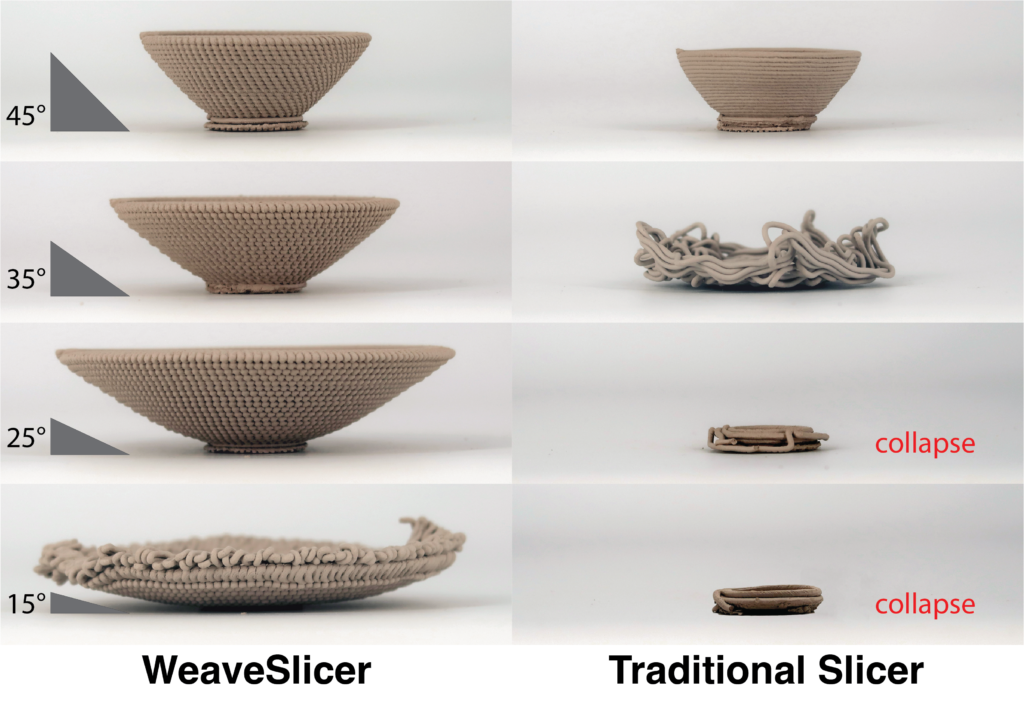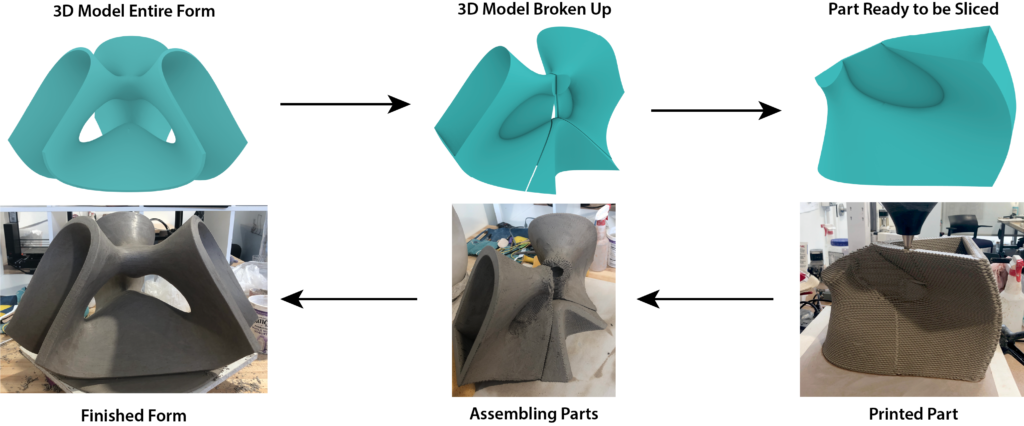WeaveSlicer: CAM for Clay 3D Printing
WeaveSlicer is a slicer optimized for 3D printing in clay that enables designers to print a much larger range of geometry than was previously possible. Dramatic angles in a form cause clay prints generated by traditional slicers to collapse. WeaveSlicer increases the structural stability of clay 3D prints by generating prints with walls of uniform thickness. WeaveSlicer is open source. Download the code from our Github repository.
Years:
2023-current
Collaborators: Camila Friedman-Gerlicz, Deanna Gelosi, Fiona Bell, and Leah Buechley
Publications:
Camila Friedman-Gerlicz, Deanna Gelosi, Fiona Bell, and Leah Buechley. 2024. WeaveSlicer: Expanding the Range of Printable Geometries in Clay. Proceedings of the 2024 CHI Conference on Human Factors in Computing Systems (CHI’24). Association for Computing Machinery, New York, NY, USA. https://doi.org/10.1145/3613904.3642622
Approach
WeaveSlicer works like many other slicers, where the user inputs a 3D model and choses various parameters. WeaveSlicer then produces a .gcode file that can be used on a range of clay 3D printers. Traditional slices maintain a constant layer thickness throughout the print, but this results in a thinner wall where there is a steeper overhang. WeaveSlicer prompts the user to pick a wall thickness, and produces a sinusoidal curve whose amplitude will vary to maintain the same wall thickness throughout.

Testing
We conducted a series of tests, comparing forms generated by WeaveSlicer to forms generated by traditional slicers and found that WeaveSlicer enables the printing of a much larger class of forms than traditional slicers do. The image below shows a series of bowls with different overhang angles, comparing print paths generated by WeaveSlicer, on the left, and a traditional slicer, on the right.

Workflow
Below is an example workflow for a ceramic sculpture by Camila Friedman-Gerlicz. The form is modeled in Rhino, 3D printed in 3 parts and then assembled.


Final fired and glazed form.